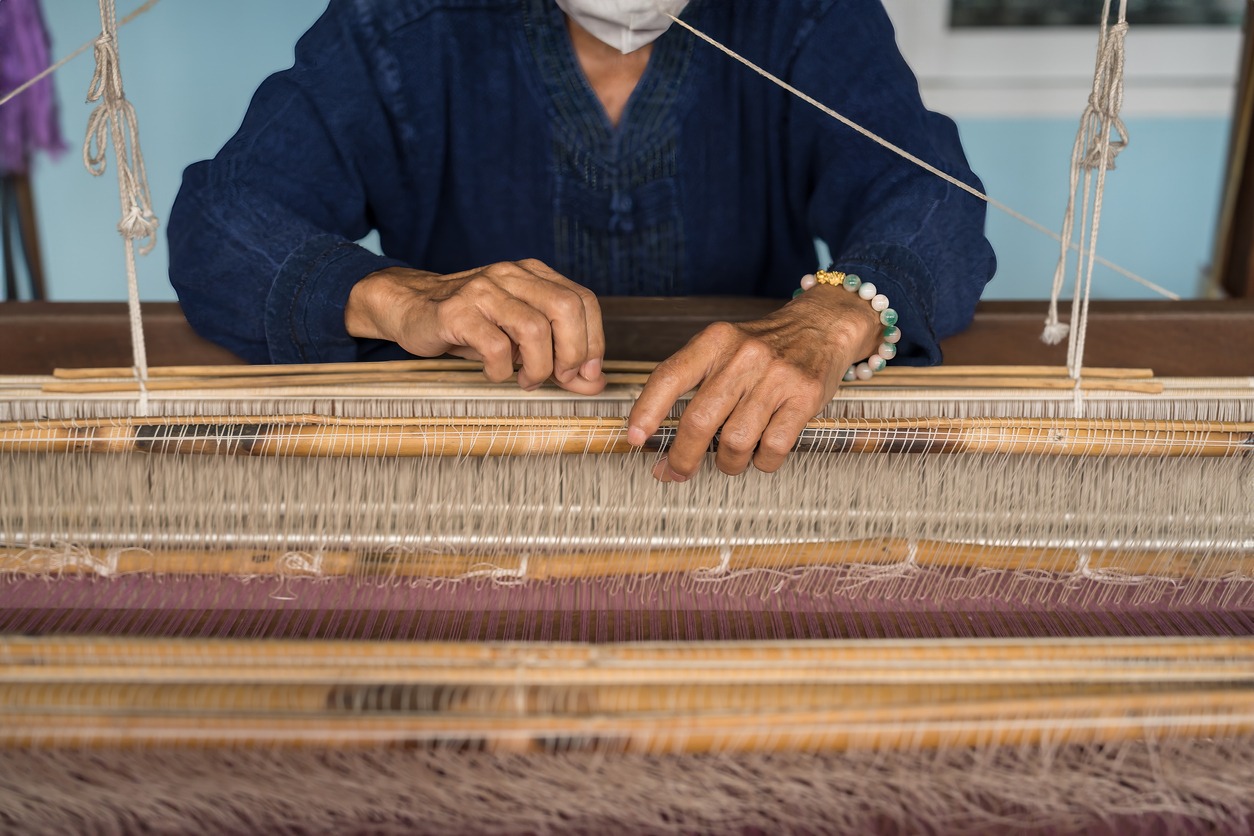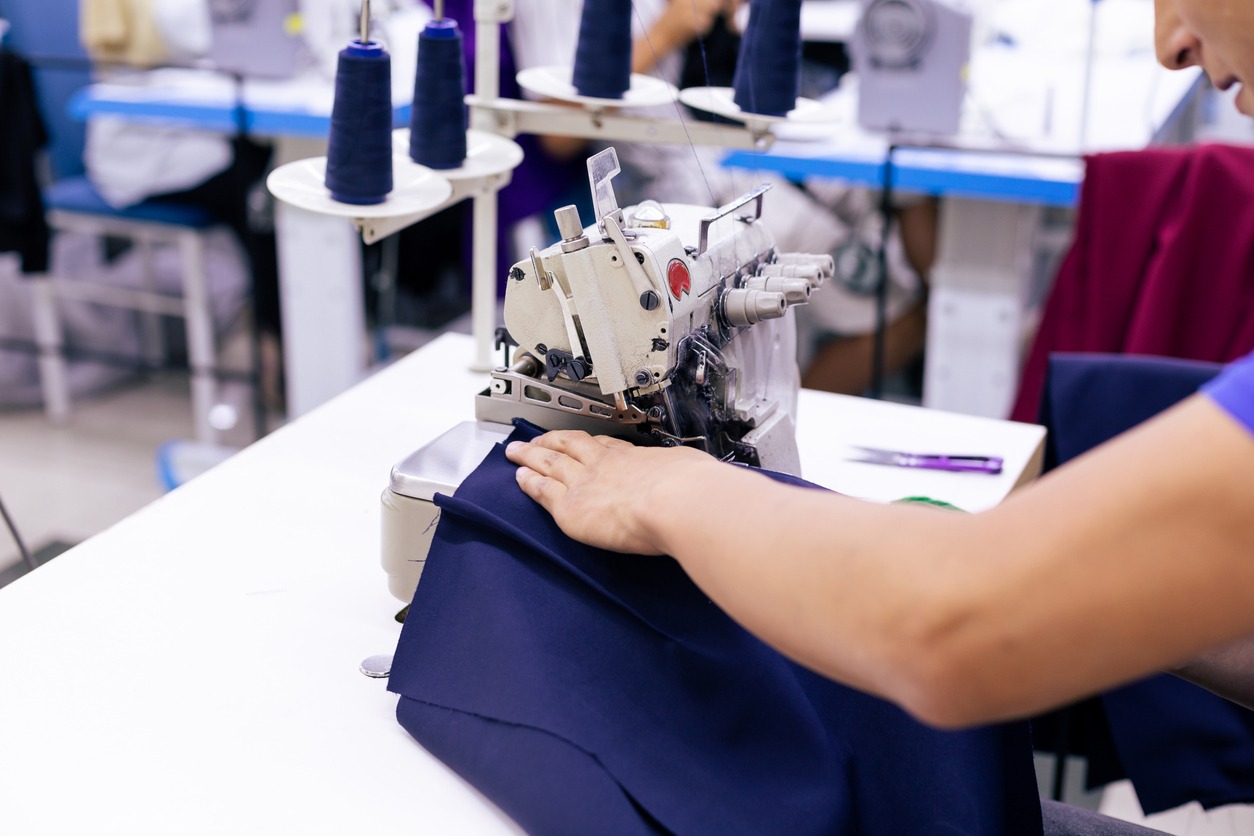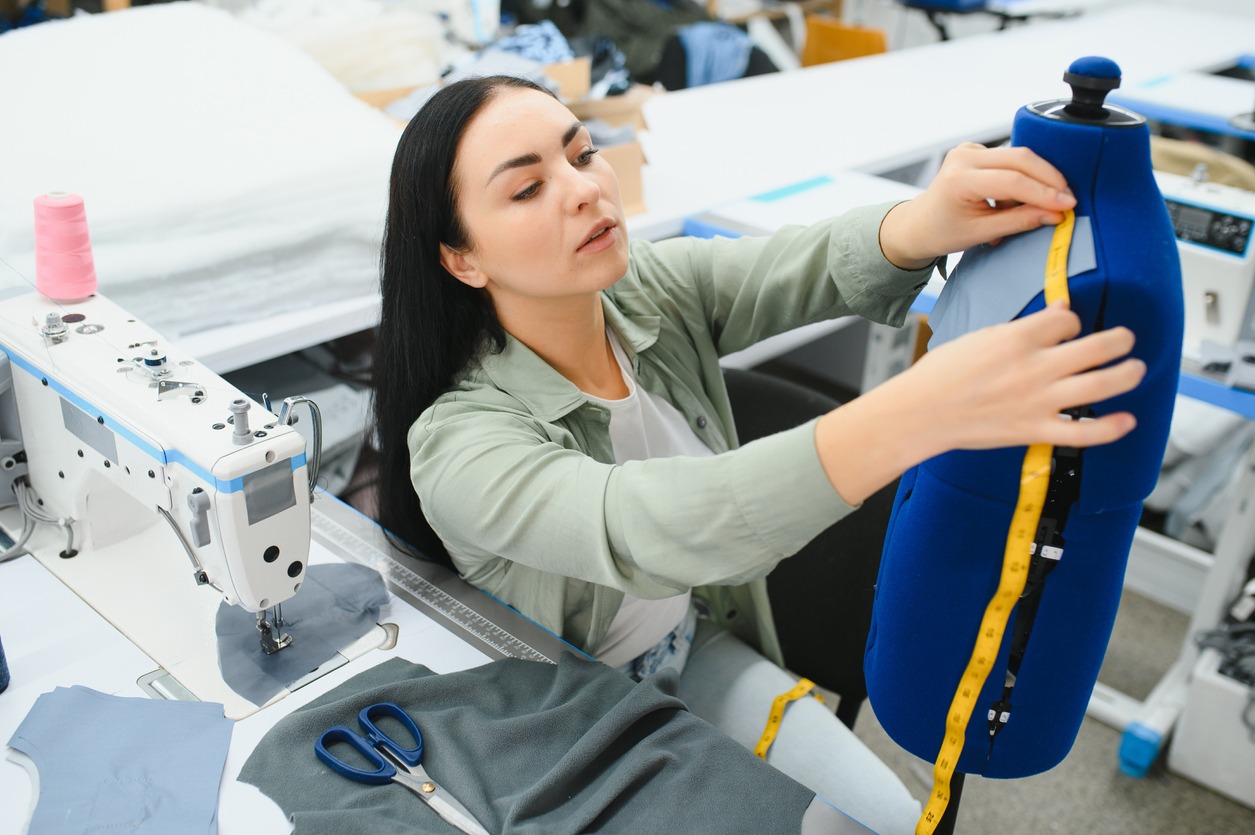Textile manufacturing is a global industry that has evolved significantly over centuries. From the ancient use of looms and natural dyes to the contemporary era of automated machinery and synthetic fibers, the journey of textile manufacturing is rich with innovation and tradition. This overview will examine the contrasting aspects of traditional and modern textile manufacturing techniques.
Traditional Textile Manufacturing Techniques
1. Hand Spinning and Weaving
Materials: Traditional textile manufacturing primarily utilizes natural fibers like cotton, wool, silk, and flax. These materials have been the cornerstone of textile production for millennia, each offering unique characteristics. Cotton is known for its breathability and softness, making it ideal for everyday wear. Wool, with its excellent insulation properties, has been pivotal in colder regions. Silk, known for its luxurious sheen and smooth texture, has been a symbol of opulence throughout history. Flax, used to make linen, is valued for its durability and coolness, making it a preferred choice in warmer climates.
Techniques: The cornerstone of traditional textile manufacturing is the use of spinning wheels and hand looms. Spinning wheels transform raw fibers into yarn or thread through a process that involves drawing out, twisting, and winding onto a bobbin. This manual technique allows for a range of thicknesses and textures in the yarn, contributing to the unique quality of hand-spun fabrics. Hand looms, which have evolved in design across different cultures, enable the interlacing of these yarns into fabric. The weaver’s skill plays a crucial role in the texture, pattern, and strength of the final textile.
Characteristics: Textiles produced through hand spinning and weaving possess a unique artisanal quality. They exhibit variations that are inherent to handmade processes, such as slight irregularities in weave and natural variations in color and texture. These characteristics are often highly prized for their authenticity and aesthetic appeal, as they offer a tactile and visual richness that machine-made fabrics cannot replicate.
2. Natural Dyes and Printing
Dyes: Traditional textile coloring involves natural dyes derived from plants, minerals, and animals. This includes indigo from plants for blues, cochineal insects for reds, and various barks, berries, and leaves yielding a spectrum of other colors. These dyes are known for their depth and complexity of color, which can change subtly with the light.
Techniques: Dyeing and printing techniques in traditional textile manufacturing are diverse. Hand block printing, a technique where carved wooden blocks are dipped in dye and stamped onto fabric, is renowned for its artistic expression. Batik, another traditional method, involves using wax to create patterns on the fabric, which is then dyed, with the wax preventing dye absorption in certain areas. Tie-dye, known for its distinctive patterns, is created by tying and bunching fabric before dyeing it. Each technique imparts a unique aesthetic to the fabric, reflecting the artistic heritage of its origin.
Eco-friendliness: Generally, traditional dyeing methods are more environmentally friendly compared to synthetic processes. They often use natural resources that are biodegradable and less toxic. However, the sustainability of these methods can vary depending on the source and extraction methods of the dyes.
3. Cultural Significance
Artisan Skills: Traditional textile manufacturing is deeply rooted in the cultural heritage of communities. Skills and techniques are often passed down through generations, preserving centuries-old traditions. These artisanal practices are not just methods of production but also forms of cultural expression that embody the history, stories, and identity of a community.
Regional Styles: The styles and motifs used in traditional textiles often reflect the local culture, history, and environment. For example, the intricate ikat weaving of Central Asia, the vibrant kente cloth of West Africa, and the detailed embroidery of Eastern Europe are all deeply connected to their respective cultural identities.
4. Limitations
Production Speed and Scalability: While rich in cultural and aesthetic value, traditional textile manufacturing methods are slower and less scalable compared to modern techniques. The time and labor-intensive nature of these processes make mass production challenging. This limitation impacts the availability and cost of these textiles, often making them more exclusive and expensive. However, this also adds to their appeal as unique, artisanal products.
Traditional textile manufacturing is a testament to the rich cultural heritage and artisanal skills that have been preserved over generations. While it faces challenges in terms of production speed and scalability, the unique qualities, cultural significance, and eco-friendliness of these methods make them invaluable to the diverse tapestry of global textile traditions.
Modern Textile Manufacturing Techniques
1. Synthetic Fibers and Blends
Materials: The advent of synthetic fibers like polyester, nylon, and acrylic marked a significant shift in textile manufacturing. Polyester, renowned for its durability and quick-drying properties, is a staple in various apparel and home textiles. Nylon, celebrated for its strength and elasticity, is commonly used in activewear and hosiery. Acrylic, often used as a wool substitute, offers warmth and lightweight properties, making it popular in knitwear.
Properties: These synthetic materials are known for their durability, wrinkle resistance, and affordability. Their ability to withstand frequent washing and wear, coupled with low maintenance requirements, makes them appealing for everyday use. Additionally, their affordability stems from the lower costs of production and raw materials, making textiles more accessible to a broader market.
2. Automated Weaving and Knitting
Machinery: Modern textile manufacturing has been revolutionized by automated machinery like power looms and circular knitting machines. Power looms automate the weaving process, significantly speeding up the production of woven fabrics. Circular knitting machines have transformed the production of knit fabrics, allowing for the efficient creation of seamless garments like t-shirts and hosiery.
Efficiency: These machines enable high-speed production while maintaining uniform quality. The automation reduces human error and increases consistency in the final product. This efficiency is crucial in meeting the demands of the global textile market and contributes to the scalability of textile production.
3. Chemical Dyes and Finishes
Dyes: Modern textiles benefit from a vast range of synthetic dyes, offering a diverse palette of stable and vibrant colors. These dyes provide consistency and colorfastness that are difficult to achieve with natural dyes.
Finishes: Beyond color, modern textiles are often treated with various finishes to enhance functionality and performance. Water-repellent finishes are used in outerwear, flame retardant finishes in safety garments, and anti-wrinkle finishes in casual and business attire. These chemical treatments add value to the fabrics by enhancing their usability and longevity.
4. Digital and 3D Printing
Innovation: Digital and 3D textile printing represent the cutting edge of textile manufacturing. Digital printing allows for detailed and custom designs to be applied to fabric efficiently and with minimal waste. 3D printing in textiles is an emerging field, promising a future where garments can be produced layer by layer directly from digital designs.
Flexibility: These technologies offer flexibility in production, enabling small batch sizes and on-demand manufacturing. This adaptability is particularly advantageous in the fashion industry, where trends change rapidly, and there is a growing demand for personalized products.
5. Sustainability Challenges
Environmental Impact: Despite the advancements and benefits of modern textile manufacturing, it faces significant sustainability challenges. The production of synthetic fibers and chemical dyes contributes to environmental pollution and high resource consumption.
Solutions: In response, the industry is exploring sustainable practices. This includes the use of recycled materials, where waste textiles and plastics are converted into new fibers. Additionally, there is a growing focus on developing eco-friendly dyeing and finishing processes that reduce water and chemical usage.
Modern textile manufacturing techniques, with their reliance on synthetic materials, automated machinery, and innovative printing technologies, have vastly increased the scale and scope of textile production. These advancements have made textiles more accessible, functional, and versatile than ever before. However, the environmental impact of these methods is a significant challenge, prompting a shift towards more sustainable practices in the industry. As the field continues to evolve, the balance between innovation, efficiency, and sustainability remains a key focus. Learn about Michael Kors’ Ownership Journey. Visit Unveiling the Ownership Tapestry – The Journey of Michael Kors and Its New Parent Company
Comparative Analysis of Traditional vs. Modern Textile Manufacturing Techniques
1. Quality vs. Quantity
Traditional Techniques: The hallmark of traditional textile manufacturing is its emphasis on craftsmanship. Artisans invest considerable time and skill in creating textiles, often resulting in products with intricate designs, rich textures, and high-quality finishes. These techniques, honed over generations, contribute to the uniqueness and longevity of the textiles. However, this focus on craftsmanship often means lower output volumes, as each piece requires significant time and manual effort.
Modern Methods: In contrast, modern textile manufacturing prioritizes mass production and consistency. Advances in technology enable the production of textiles on a vast scale, meeting the high demand of global markets. Automated processes ensure uniformity and standardization across products. While this approach maximizes output and efficiency, it may not match the unique quality and character of handcrafted textiles.
2. Environmental Impact
Traditional Methods: Traditional textile manufacturing is often more sustainable and environmentally friendly. Natural materials, such as organic cotton and natural dyes, are more likely to be biodegradable and less toxic compared to synthetic alternatives. Furthermore, many traditional practices, being manual, consume less energy. However, some traditional dyeing processes can be water-intensive and may involve substances that are not environmentally friendly.
Modern Techniques: Modern textile production, while efficient, can be resource-intensive and environmentally challenging. The production of synthetic fibers like polyester contributes significantly to pollution and resource consumption. However, there is a growing awareness and effort within the industry to mitigate these impacts. Innovations such as water-efficient dyeing processes, the use of recycled materials, and the development of eco-friendly synthetic fibers are examples of improvements being made in the field.
3. Cost and Accessibility
Artisan Textiles: Textiles produced using traditional methods can be more expensive and less accessible to the average consumer. The labor-intensive nature of these techniques, along with the use of high-quality natural materials, contributes to higher costs. Additionally, artisan textiles are often produced in smaller quantities, making them less available in mainstream markets.
Modern Textiles: Modern manufacturing methods have made textiles more affordable and widely available. The economies of scale achieved through mass production lower the cost per unit, making these textiles accessible to a broader demographic. The widespread distribution networks established by large-scale manufacturers also ensure that modern textiles are readily available globally.
4. Cultural Preservation vs. Innovation
Traditional Textiles: Traditional textile techniques are deeply intertwined with cultural heritage. They often embody centuries-old traditions, regional artistry, and cultural stories. Preserving these techniques is crucial for maintaining cultural diversity and heritage. However, sticking strictly to traditional methods can sometimes limit innovation and adaptation to changing global trends.
Modern Textiles: Modern textile manufacturing is characterized by its embrace of innovation and responsiveness to global trends. Advancements in fiber technology, manufacturing processes, and design methods have led to a vast array of new textiles suited to various needs and preferences. While this approach fosters innovation and adaptation, it can sometimes overshadow traditional techniques and cultural diversity in textiles.
The comparison between traditional and modern textile manufacturing techniques reveals a complex interplay between quality and quantity, environmental impact, cost and accessibility, and the balance between cultural preservation and innovation. Each approach has its strengths and challenges, contributing uniquely to the rich tapestry of the global textile industry. The future of textile manufacturing lies in blending the best of both worlds—leveraging modern technological advancements while respecting and preserving the invaluable heritage of traditional textile crafts.
Conclusion
The exploration of traditional and modern textile manufacturing techniques reveals a multifaceted industry characterized by its rich history, technological advancements, and ongoing challenges. Each approach brings its own unique strengths and faces distinct challenges, shaping the landscape of the global textile market.
In traditional textile manufacturing, the emphasis on craftsmanship, use of natural materials, and adherence to cultural heritage contribute to the creation of textiles with unique aesthetic and cultural value. These methods, however, face limitations in terms of production speed and scalability, often resulting in higher costs and less accessibility. Despite these challenges, traditional textiles remain vital for their cultural significance and artisanal quality.
Modern textile manufacturing, on the other hand, has transformed the industry with its focus on efficiency, innovation, and mass production. The use of synthetic fibers, automated machinery, and advanced dyeing and finishing techniques has enabled the production of textiles that meet diverse and evolving consumer needs. Modern textiles are characterized by their affordability, consistency, and wide availability. However, this approach often comes at an environmental cost, prompting a growing focus on sustainability within the industry.
The comparative analysis of these two approaches highlights a dynamic tension between quality and quantity, environmental impact, cost, accessibility, cultural preservation, and innovation. It’s evident that both traditional and modern methods have indispensable roles in the textile industry. The future of textile manufacturing likely lies in a balanced integration of these methods, combining the sustainability and cultural richness of traditional techniques with the efficiency and innovation of modern practices.
As we move forward, it is crucial for the textile industry to embrace both heritage and progress, ensuring that the production of textiles not only meets practical needs but also respects the environment and preserves the rich tapestry of cultural traditions. By acknowledging and addressing the challenges inherent in both traditional and modern methods, the textile industry can continue to evolve in a manner that is sustainable, respectful of its roots, and responsive to the changing world.




